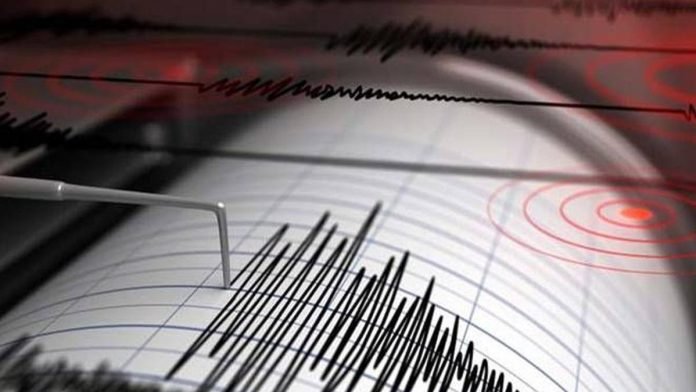Srinagar, April 19, 2025: A moderate-intensity earthquake struck Jammu and Kashmir at approximately 12:21 PM on Saturday, with tremors felt across the Kashmir Valley and surrounding areas. The epicentre of the quake, measuring 5.8 on the Richter scale, was located in Pakistan, 60 kilometres northwest of Rawalpindi, at a latitude of 33.63 degrees North and longitude of 72.46 degrees East, with a depth of 10 kilometres, according to the National Center for Seismology (NCS).
The earthquake, which occurred at a shallow depth, triggered mild tremors in Srinagar and other parts of the Valley, prompting residents to rush out of buildings for safety. Despite the widespread tremors, no immediate reports of loss of life or property damage have emerged, as confirmed by local authorities. “The quake was felt across many areas, but so far, we have no reports of casualties or structural damage,” a senior official from the Jammu and Kashmir Disaster Management Authority stated.
Pakistan’s National Seismic Monitoring Centre (NSMC) reported that the quake struck at 12:31 PM local time, with tremors felt in Punjab’s Attock, Chakwal, and Mianwali districts, as well as Peshawar and Mardan in Khyber Pakhtunkhwa. The region’s seismic activity is attributed to its location on the boundary of the Indian and Eurasian tectonic plates, making it prone to frequent earthquakes. The devastating 2005 earthquake, which killed over 74,000 people in Pakistan and affected Jammu and Kashmir, remains a stark reminder of the area’s vulnerability.
Seismologically, the Kashmir Valley lies in Seismic Zone V, one of India’s most earthquake-prone regions. Experts have long advocated for earthquake-resistant construction to mitigate risks, noting that traditional Kashmiri structures like Dajji Dewar were less susceptible to seismic damage compared to modern cement buildings. “Shallow quakes like this can cause concern, but small tremors often release pent-up energy, reducing the risk of larger events,” said Prof. Ghulam Jeelani, a seismologist at the University of Kashmir.
Residents in Srinagar described the tremors as brief but noticeable. “I felt the ground shake for a few seconds and immediately stepped outside,” said Aijaz Ahmad, a shopkeeper in Lal Chowk. Social media buzzed with accounts of the event, with users sharing their experiences and expressing relief at the lack of damage.
The Jammu and Kashmir administration has urged residents to remain vigilant and follow safety protocols, such as “Drop, Cover, and Hold On” during tremors. The NCS continues to monitor for potential aftershocks, given the quake’s shallow depth. Authorities have also advised checking the structural integrity of buildings, particularly in rural areas where construction standards may vary.
Saturday’s earthquake follows a pattern of seismic activity in the region, with a 4.0-magnitude quake striking Baramulla on December 27, 2024, and earlier tremors in 2023 and 2024. As Jammu and Kashmir continues to balance its cultural and economic resurgence—evidenced by events like the Amarnath Yatra 2025’s 4,200 Day 1 registrations and Emversity’s new Srinagar campus—the region remains on alert for natural challenges like earthquakes.



